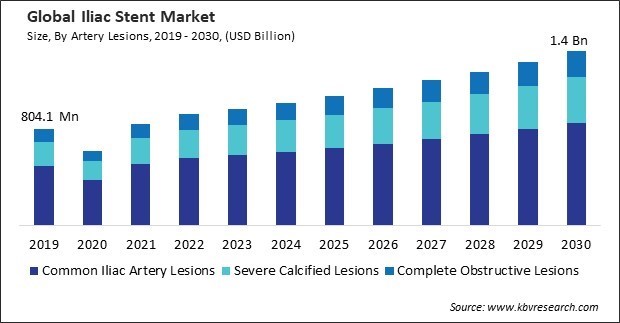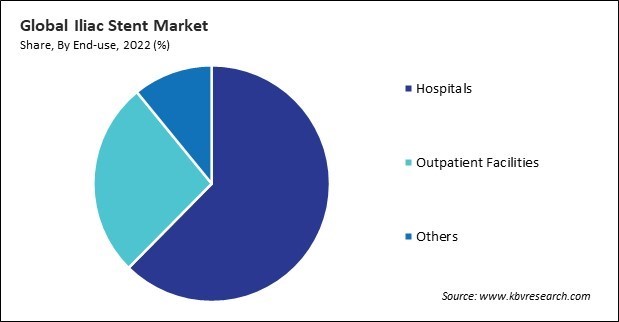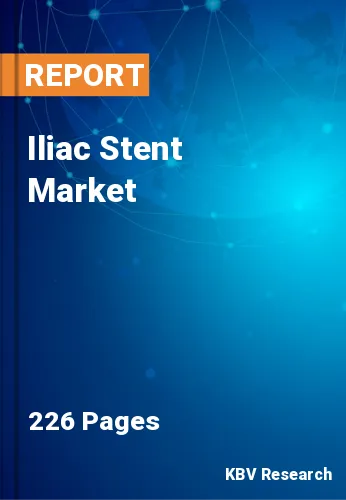“Global Iliac Stent Market to reach a market value of USD 1.4 Billion by 2030 growing at a CAGR of 5.9%”
The Global Iliac Stent Market size is expected to reach $1.4 billion by 2030, rising at a market growth of 5.9% CAGR during the forecast period.
North America has a significant prevalence of PAD. Therefore, the North America region captured $400.0 million revenue in the market in 2022. The incidence of PAD is predicted to climb with age and the prevalence of risk factors like diabetes and obesity rising, which will fuel the need for iliac stents as the main treatment option for revascularization and symptom relief.

PAD is a common circulatory problem in which narrowed arteries reduce blood flow to the limbs, most commonly affecting the lower extremities. It affects a large population worldwide, particularly among older adults and individuals with risk factors such as smoking, diabetes, hypertension, and dyslipidemia. Hence, the prevalence of peripheral artery disease is propelling the market’s growth.
Aging is one of the major risk factors for vascular diseases such as PAD, which commonly affects the iliac arteries. As individuals age, the walls of their blood vessels may become thicker and less elastic, leading to plaque buildup and arteries narrowing. Therefore, the increasing aging population is driving the growth of the market.
However, the cost of iliac stent placement includes various components, such as the price of the stent device, hospital fees, physician fees, anesthesia costs, imaging studies, medications, and follow-up care. These expenses can add to a substantial financial burden for patients and healthcare systems, particularly in cases where multiple stents are required, or complications arise during the procedure. Thus, the high cost of treatment is hampering the market’s growth.
During the height of the pandemic, many elective medical procedures, including those related to peripheral artery disease (PAD) and iliac stenting, were postponed or canceled to conserve healthcare resources and reduce the risk of viral transmission. This temporarily decreased procedural volumes and revenue for manufacturers and healthcare providers in the market. Thus, the COVID-19 pandemic had a negative impact on the market.
On the basis of artery lesions, the market is segmented into common iliac artery lesions, severe calcified lesions, and complete obstructive lesions. The common iliac artery lesions segment recorded 60.6% revenue share in the market in 2022. Common iliac artery lesions have significant clinical implications, as they can compromise blood flow to both the internal and external iliac arteries, affecting perfusion to the pelvis, lower extremities, and vital organs.
Based on end-use, the market is categorized into hospitals, outpatient facilities, and others. The outpatient facilities segment witnessed 26.7% revenue share in the market in 2022. Outpatient facilities offer a more comfortable and convenient environment for patients undergoing vascular interventions like iliac stent placement.

Based on type, the market is divided into self-expandable stents, balloon-expandable stents, and others. In 2022, the self-expandable stents segment garnered 62.3% revenue share in the market. Self-expandable stents are designed to be flexible and conformable, allowing for precise deployment and adaptation to the shape and curvature of the iliac arteries.
Free Valuable Insights: Global Iliac Stent Market size to reach USD 1.4 Billion by 2030
Region-wise, the market is analyzed across North America, Europe, Asia Pacific, and LAMEA. In 2022, the Asia Pacific region generated 22.6% revenue share in the market in 2022. Urbanization and lifestyle changes in the Asia Pacific region have led to the adoption of Westernized lifestyles characterized by physical inactivity, unhealthy dietary habits, and increased prevalence of risk factors for cardiovascular diseases.
| Report Attribute | Details |
|---|---|
| Market size value in 2022 | USD 922.8 Million |
| Market size forecast in 2030 | USD 1.4 Billion |
| Base Year | 2022 |
| Historical Period | 2019 to 2021 |
| Forecast Period | 2023 to 2030 |
| Revenue Growth Rate | CAGR of 5.9% from 2023 to 2030 |
| Number of Pages | 226 |
| Number of Tables | 350 |
| Report coverage | Market Trends, Revenue Estimation and Forecast, Segmentation Analysis, Regional and Country Breakdown, Porter’s 5 Forces Analysis, Company Profiling, Companies Strategic Developments, SWOT Analysis, Winning Imperatives |
| Segments covered | Type, Artery Lesions, End-use, Region |
| Country scope |
|
| Companies Included | Becton, Dickinson and Company, Abbott Laboratories, Boston Scientific Corporation, W. L. Gore & Associates, Inc., Medtronic PLC, Cook Medical, Inc. (Cook Group), Terumo Corporation, iVascular S.L.U., Getinge AB, Biotronik SE & Co. KG |
By Artery Lesions
By End-use
By Type
By Geography
The Market size is projected to reach USD $1.4 billion by 2030.
Expansion of the global healthcare industry are driving the Market in coming years, however, Multifaceted financial challenge of iliac stent placement restraints the growth of the Market.
Becton, Dickinson and Company, Abbott Laboratories, Boston Scientific Corporation, W. L. Gore & Associates, Inc., Medtronic PLC, Cook Medical, Inc. (Cook Group), Terumo Corporation, iVascular S.L.U., Getinge AB, Biotronik SE & Co. KG
The expected CAGR of this Market is 5.9% from 2023 to 2030.
The Hospitals segment is registering maximum revenue in the Market by End-use in 2022; thereby, achieving a market value of $876 million by 2030.
The North America region dominated the Market by Region in 2022, and would continue to be a dominant market till 2030; thereby, achieving a market value of $600 million by 2030.
Our team of dedicated experts can provide you with attractive expansion opportunities for your business.

 Drivers
Drivers
 Restraints
Restraints
 Opportunities
Opportunities
 Challenges
Challenges
